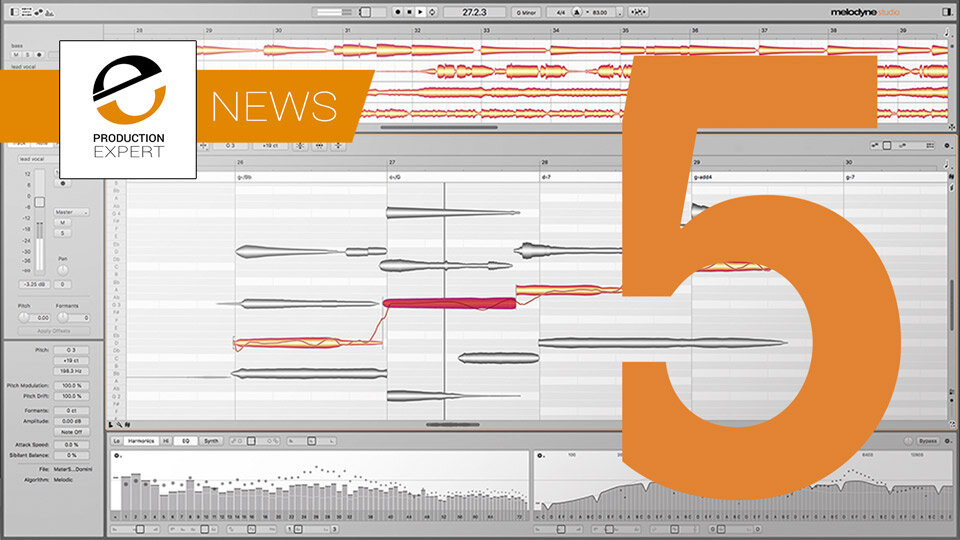

- #Celemony melodyne 4 essential upgrade to studio update
- #Celemony melodyne 4 essential upgrade to studio software
In a bid to confuse the algorithm, we feed some strummed guitar chords into Melodyne, with two of the strings out of tune. This works best with monophonic material and arpeggios with clear attack on each note. Once your chords are analysed, you can conform any other audio content too. Jumping back to a duplicate lead vocal lets you quickly knock up a workable harmony part that fits with your song’s harmony.Ĭhord Recognition and Chord Track also allow for extraordinary creative play. This chord data appears in all plug-in instances in your session. By analysing chords on a harmonic audio track, Melodyne can, with some accuracy, understand what chords you’re using in your song. When combined with the new Analyze Chords tool, that double click becomes a supercharger for faking vocal harmonies. If you’re just nudging the odd flat note onto the grid, it’s a slick and speedy solution. Our favourite addition is the ability to double-click to centre errant notes to the nearest exact pitch. Admittedly, our test is crude, and once you start splitting up notes manually so the algorithm can get a better sense of what it’s analysing, the results are more subjective.Ĭelemony has focused on workflow with this update. Celemony says the algorithm listens the way humans do, rather than taking an average pitch over a note’s duration. It genuinely makes for a more transparent process.Ĭelemony has also improved the accuracy of its Melodic algorithm, as we learn when we compare a singer’s performance in Melodyne 4 and 5, with automatic pitch quantisation applied, and hear a subtle difference. What’s ingenious about the processing behind the new sibilance tool is that, in the background, it separates the noise and tonal portions of the vocal sound, so that sibilants are not affected by tuning at all. In the context of our tracks, though, it was no real issue. In our tests, we found that the detection was remarkably accurate on S, Z, Ch, K and T sounds but less successful at discerning Th sounds. The process isn’t fully automated but once you can see the sibilance, it makes life a lot easier. With Melodyne 5, we were able to re-time sibilance on six backing vocal tracks to lock them to the same moment, all in just a few minutes.

Having half a dozen consonant sounds delivered at slightly different times sounds sloppy can undermine intelligibility.

The second reason the sibilance tools are so important relates to double-tracked and stacked vocals. Otherwise, the sibilance tends to become an unvoiced ‘th’ sound.Ĭonversely, you can kill the vowels and keep the sibilance, which can be useful if, for example, you need to add intelligibility back into BVs. That said, we advise against reducing sibilance en masse when decreasing by more than 50 per cent on lead vocals. As if by magic, as you drop its level, the Balance tool will only reduce the sibilants, leaving you with cleaner vocals and no need for a plug-in de-esser. If you have a single problematic consonant, you can dial it back with the Sibilant Balance tool, which can also tackle all your sibilants in one go. The first is that you can now see sibilants, whose vertical stripes mark them out from regular notes. Melodyne 5 now detects this automatically, which that’s important for two reasons. You could get around this by splitting the consonant from the vowel but this was time-consuming. If you wanted to tune a note with a consonant attached, it meant retuning everything, and sometimes the result wouldn’t sound natural.
#Celemony melodyne 4 essential upgrade to studio software
In previous versions of Melodyne, the software had no way of determining the difference between sung vowel sounds and consonants.

Sibilance detection is the headline here. There’s also a new fade tool that can be used on individual notes within chords, a new levelling macro, chord recognition, and a percussive pitched algorithm. The most significant updated feature in the new Melodyne 5 is the Melodic algorithm, with sibilance detection and improved pitch identification to make corrected notes sound more in tune.
#Celemony melodyne 4 essential upgrade to studio update
Since the introduction of this groundbreaking technology in 2009, each Melodyne update has ushered in even more impressive tools for audio manipulation and correction. It can be musically transparent when required but also excels in sound design and manipulation thanks to its powerful Direct Note Access technology, which allows you to alter notes within chord in audio files. Melodyne is the king of pitch correction.


 0 kommentar(er)
0 kommentar(er)
